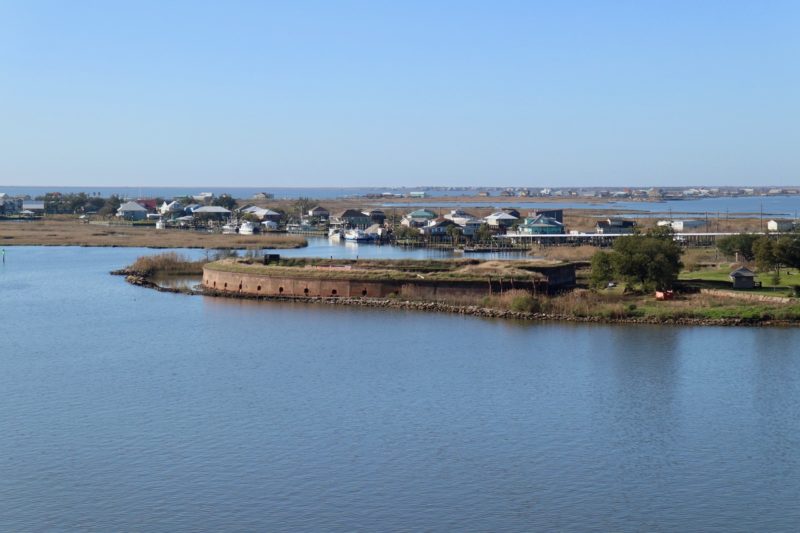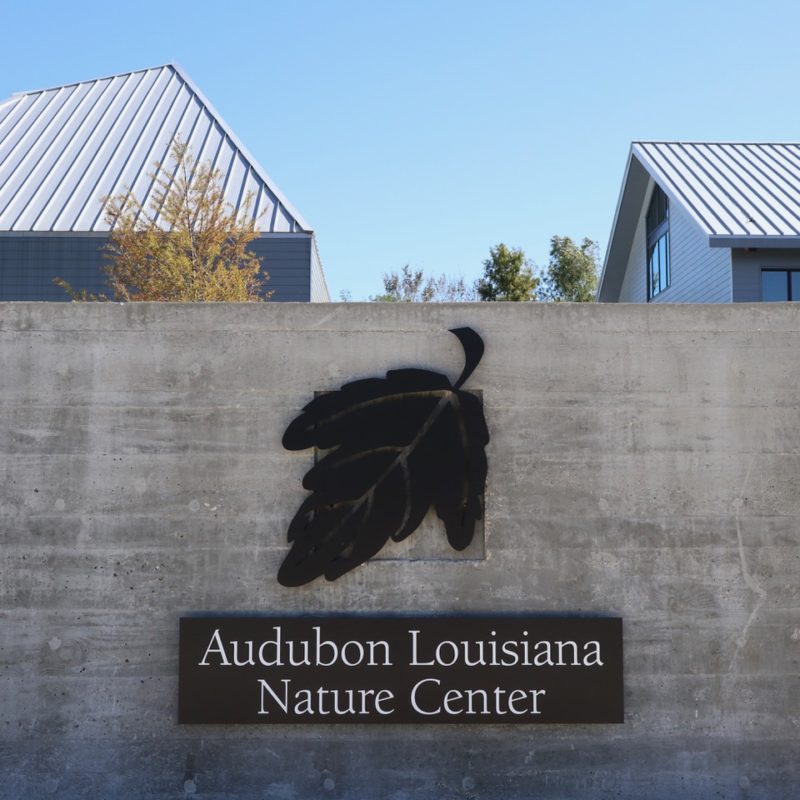
The ruins of Fort Pike on the Rigolets, one of two entrances into “Lake” Pontchartrain (photos by: Folwell Dunbar)
“The only benefit to aging is wisdom.”
~ My father, George Dunbar
Teaching Sensible Lessons
When I was in college, I took a class on coastal ecology. We spent a week at the Duke University Marine Lab in Beaufort, North Carolina. During a lecture, my professor stated emphatically, “Barrier islands, including the one we’re standing on now, should never have been developed. Building permanent structures on land that is constantly shifting is a really bad idea!”
“So, from Roanoke to Galveston,” I said, “we’ve obviously made a number of poor decisions.”
“Yes,” he said, “we certainly have.”
Years later, when I found myself teaching Louisiana History and World Geography, I mentioned the barrier island lesson to my 7th and 8th grade students, and pointed to our own, Grande Isle.
“Isn’t that where they have the rodeo?” One of them asked.
“No,” said a classmate, “that’s at the prison.”
“Why don’t they just move?” suggested another. “I bet you they don’t even have malls!”
Teaching middle school history and geography (middle school anything for that matter) is a tough sell. Today’s generation is more detached from the past and nature than ever before. If I were to impart any valuable lessons, I’d have to pull out all the stops.
So, I did whatever I could to perk their ever-waning interest. I had them paint massive maps on “cafetorium” walls and playgrounds kickball courts. I took them out into the Honey Island Swamp in Voyager canoes, and I had them do oral histories with local fishermen and trappers. I even wrote an activity book that tricked them into using maps and artifacts for a purpose.
I also drew on examples from the past. History is littered with valuable, hard-earned lessons. For example, in A.D. 79, the residents of Pompeii and Herculaneum found out the hard way that the rich volcanic soil they farmed came at a terrible price. Granted, they didn’t have the benefit of modern volcanology, but, the occasional rumblings of “the gods” should have been at least a telltale warning.
The people who built Tenochtitlan on Lake Texcoco picked the location because it was easy to defend. When Hernán Cortez finally defeated the Triple Alliance in 1521 (with Guns, Germs and Steel), he decided to build his own capital atop the ruins of the ancient city. It seemed like a practical and politically astute decision at the time. He, like the Aztecs, didn’t understand plate tectonics. Today, Mexico City is one of the largest cities in the world, and it sits precariously above a dry lakebed and an active fault. It’s a catastrophe waiting to happen!
In 1788, the burgeoning city of New Orleans went up in flames. 856 of 1,100 structures were destroyed. The tightly packed wooden houses of the Vieux Carré were like Christmas Eve bonfires on the levee. When the Spanish rebuilt the city, they made sure to impose (and enforce) strict building codes, hence the brick and stucco Creole cottages and townhouses of the French Quarter.
Just this past summer, the people of Texas, Florida and Puerto Rico learned tough lessons from tropical cyclones. For example, Houston’s politicians and urban planners learned that the city’s lack of zoning restrictions and its unbridled growth over the past fifty years may have actually exacerbate the flooding. It was a wake-up call for smart growth and responsible design.
Engaging projects and historical anecdotes are great, but, they don’t always work. Unless the lessons themselves are relevant to the learner, they generally don’t stick. They have to be “real;” they have to matter – just like it mattered to my father to build a house that could survive a 100-year storm. So, what are some of the lessons that should matter to all residents of New Orleans and coastal Louisiana? The following twenty are a good start:

The recently reopened Louisiana Nature Center in New Orleans East, an area ravaged by Hurricane Katrina (photos by: Folwell Dunbar)
For example, in 1984, Mexico City was devastated by a massive earthquake. Between then and now, the government made a number of changes. It developed an early warning system, it put in place a disaster response protocol, and it imposed better building restrictions. As a result, the earthquake of 2017 wasn’t nearly as bad as it could have been. Lives were saved.
Hopefully, post-Katrina New Orleans is better prepared as well. We have certainly learned valuable, hard-earned lessons; and, we may have even reacquired some of the old-timers’ wisdom…
Folwell Dunbar is an educator and writer. He lives near the river in a house built by old-timers. He can be reached at fldunbar@icloud.com
 NOLAbeings Multimedia artist Claire Bangser created NOLAbeings as a portrait-based story project that marries...
NOLAbeings Multimedia artist Claire Bangser created NOLAbeings as a portrait-based story project that marries...  Voodoo in New Orleans: Reviving history: New Orleans fortune telling This article takes a deep dive into the history of Voodoo in New Orleans, its hybridization with Catholicism, and its present-day place in the city's culture. The author visits fortune-tellers in the French Quarter, using their guidance as a tool for introspection rather than a deterministic predictor of the future. Through her experiences in New Orleans, the author feels a mystical connection to both the past and the future.
Voodoo in New Orleans: Reviving history: New Orleans fortune telling This article takes a deep dive into the history of Voodoo in New Orleans, its hybridization with Catholicism, and its present-day place in the city's culture. The author visits fortune-tellers in the French Quarter, using their guidance as a tool for introspection rather than a deterministic predictor of the future. Through her experiences in New Orleans, the author feels a mystical connection to both the past and the future. 